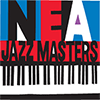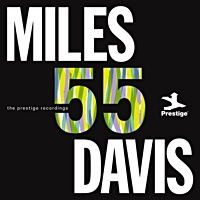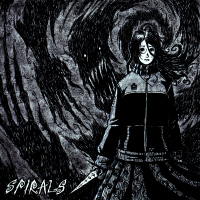Home » Jazz Musicians » Percy Heath
Percy Heath

The American jazz musician and bassist with the Modern Jazz Quartet, Percy Heath, began his musical apprenticeship in 1946, after Air Force service. It was just the right time. Though the double bass had always been used sporadically in jazz, performers capable of advancing both its rhythmic and harmonic role into a distinctive jazz-bass language were arriving on the scene more slowly than trumpeters, saxophonists or pianists.
But by the 1940s, the place of the bass had significantly changed. Swing specialists like Pops Foster, John Kirby and Walter Page had brought animation, drive and swing - as well as harmonic breadth - to bass technique, and Duke Ellington's young star, Jimmy Blanton, had added a soloistic agility that rewrote the book on the instrument. This was the bass world that Heath entered. His playing became the quintessence of a style that suited the complex demands of a modern jazz ensemble. Like Blanton's successors, Ray Brown and Oscar Pettiford - contemporaries on the late-1940s American scene - Heath was precise in his intonation, buoyant and springy in feel and capable of spontaneous counter-melodies that enhanced the frontline's playing. He always sounded as if he was pushing the beat, rather than sitting contentedly on top of it.
If Heath had an advantage in understanding how an instrument designed for a supporting role might best coexist with partners, it was because he was raised in one of the most respected of jazz families (rivaled only by the Jones brothers, Elvin, Thad and Hank). He had worked alongside his saxophone-playing brother Jimmy in trumpeter Howard McGhee's band in 1947, and when youngest brother Al caught up on drums in the 1950s, the three sometimes performed together.
Music had been in the Heath family from Percy's earliest memories. His parents had a gospel quartet, and he began his career on violin, playing in church in Philadelphia, where the family had moved from his birthplace in Wilmington, North Carolina.
After service as a fighter pilot in WWII, Heath began studying double-bass at the Granoff School of Music, Philadelphia. Within months, he was good enough to join the house-band at the city's Down Beat Club, where he met the bebop trumpeter Howard McGhee, who had played with Charlie Parker. By 1947, Percy and Jimmy Heath were touring with McGhee's sextet, and the following year they appeared at the first Festival International de Jazz in Paris.
By the end of the 1940s, Percy had moved to New York, and become a busy freelance bassist. He worked with many of the younger stars of jazz, including Parker, Thelonious Monk, Miles Davis, Stan Getz, Fats Navarro, Sonny Rollins and Dizzy Gillespie, regularly appearing with the latter's band from 1950 to 1952. Before the end of the engagement with Gillespie, Heath had made the move that would shape the rest of his career. His principal bass model, Ray Brown, was leaving a quartet led by bop vibraphonist Milt Jackson, with drummer Kenny Clarke and the classically trained pianist, John Lewis.
Read moreTags
Miles Davis: Miles '55: The Prestige Recordings

by Richard J Salvucci
It is hard to imagine any casual jazz fan failing a blindfold test on the vinyls on offer here. It is a game people play: how quickly can you identify the performer. A lot of horn players make it into the competition, because horns are boisterous and mimic the human voice and persona. Clark Terry, some say, requires one note. And for much of his career, starting in the mid-1950s, a compatriot and mentee of Terry's: Miles Davis was equally ...
Continue ReadingTrio and Quintet

by C. Michael Bailey
Pianist and composer Elmo Hope has more in common with Tadd Dameron than most of his other jazz peers. Both men were primarily composers and arrangers who concentrated on their own music rather than standards. Both men spent their professional lives in New York City during the twilight of bebop and the flourishing of hard bop. Neither man boasted large discographies as leaders, but appeared on a significant number of recordings as sidemen. Their careers were both shortened dramatically by ...
Continue ReadingOrnette Coleman: Genesis of Genius: The Contemporary Albums

by Jeff Kaliss
For many an Ornette Coleman devotee, devotion was pledged with the singular saxophonist's The Shape of Jazz to Come (Atlantic). It was recorded in May and released in November of 1959, and it's a matter of when in our life we caught up with it. For some of us, that's when we first felt liberated by jazz. That album, produced by Nesuhi Ertegun, remains a hard act to follow, even for Coleman himself. Or to precede. But “Hollywood ...
Continue ReadingNew Faces - New Sounds

by C. Michael Bailey
Jazz is littered with musicians like Elmo Hope: young, talented and, ultimately, doomed because of racism, poverty, and chemical dependency. Born in New York City, the son of immigrants from the Caribbean, Hope managed to release more than a baker's dozen of studio recordings in as many years, before dying of drug addiction-related health problems in 1967 at the age of 43. Hope was primarily known as a jazz composer with a spare, deliberate piano style more akin to that ...
Continue ReadingA Remembrance of Percy Heath

by R.J. DeLuke
This article was originally published at All About Jazz in May 2005. Percy Heath could play the hell out of that big contrabass. Played it for more than half a century. With Bird and Miles and Diz and 'Trane and Brownie and the venerable Modern Jazz Quartet and on and on. And if you're reading this you know that already, probably. He played in dumps; he played R&B. Played for next to nothing. But he also ...
Continue ReadingWes Montgomery: The Incredible Jazz Guitar of Wes Montgomery

by Chris May
Ask a dozen jazz guitar fans for their all-time top guitar albums and The Incredible Jazz Guitar of Wes Montgomery is likely to be high on every list. If it isn't, chances are Montgomery's live set Full House (Riverside, 1962), recorded two years later, will be. With these discs, Indianapolis-born Montgomery (1923-68) gave the guitar its biggest quantum leaps forward, both stylistically and in terms of listener acceptance, since Charlie Christian in the late 1930s/early 1940s and Johnny Smith in ...
Continue ReadingElmo Hope: Trio and Quintet

by AAJ Italy Staff
Questo è uno dei pochi dischi di Elmo Hope in circolazione oggi in Italia. Un plauso alla Blue Note che l'aveva già pubblicato in CD (con identica copertina e stessi brani) 15 anni fa ed oggi lo riedita per il beneficio di chi se l'era perso.Dopo anni di totale oblio, lo sfortunato pianista e compositore bop ha avuto nel decennio scorso una certa rivalutazione critica ma dal pubblico jazz è ancora ampiamente ignorato.Un vero peccato, perché ...
Continue ReadingJazz Musician of the Day: Percy Heath

Source:
Michael Ricci
All About Jazz is celebrating Percy Heath's birthday today!
The American jazz musician and bassist with the Modern Jazz Quartet, Percy Heath, began his musical apprenticeship in 1946, after Air Force service. It was just the right time. Though the double bass had always been used sporadically in jazz, performers capable of advancing both its rhythmic and harmonic role into a distinctive jazz-bass language were arriving on the scene more slowly than trumpeters, saxophonists or pianists. But by the 1940s, ...
read more
Jazz Musician of the Day: Percy Heath

Source:
Michael Ricci
All About Jazz is celebrating Percy Heath's birthday today!
The American jazz musician and bassist with the Modern Jazz Quartet, Percy Heath, began his musical apprenticeship in 1946, after Air Force service. It was just the right time. Though the double bass had always been used sporadically in jazz, performers capable of advancing both its rhythmic and harmonic role into a distinctive jazz-bass language were arriving on the scene more slowly than trumpeters, saxophonists or pianists. But by the 1940s, ...
read more
Jazz Musician of the Day: Percy Heath

Source:
Michael Ricci
All About Jazz is celebrating Percy Heath's birthday today!
The American jazz musician and bassist with the Modern Jazz Quartet, Percy Heath, began his musical apprenticeship in 1946, after Air Force service. It was just the right time. Though the double bass had always been used sporadically in jazz, performers capable of advancing both its rhythmic and harmonic role into a distinctive jazz-bass language were arriving on the scene more slowly than trumpeters, saxophonists or pianists. But by the 1940s, ...
read more
Jazz Musician of the Day: Percy Heath

Source:
Michael Ricci
All About Jazz is celebrating Percy Heath's birthday today!
The American jazz musician and bassist with the Modern Jazz Quartet, Percy Heath, began his musical apprenticeship in 1946, after Air Force service. It was just the right time. Though the double bass had always been used sporadically in jazz, performers capable of advancing both its rhythmic and harmonic role into a distinctive jazz-bass language were arriving on the scene more slowly than trumpeters, saxophonists or pianists. But by the 1940s, ...
read more
Jazz Musician of the Day: Percy Heath

Source:
Michael Ricci
All About Jazz is celebrating Percy Heath's birthday today!
The American jazz musician and bassist with the Modern Jazz Quartet, Percy Heath, began his musical apprenticeship in 1946, after Air Force service. It was just the right time. Though the double bass had always been used sporadically in jazz, performers capable of advancing both its rhythmic and harmonic role into a distinctive jazz-bass language were arriving on the scene more slowly than trumpeters, saxophonists or pianists... Read more.
Place our ...
read more
Jazz Musician of the Day: Percy Heath

Source:
Michael Ricci
All About Jazz is celebrating Percy Heath's birthday today!
The American jazz musician and bassist with the Modern Jazz Quartet, Percy Heath, began his musical apprenticeship in 1946, after Air Force service. It was just the right time. Though the double bass had always been used sporadically in jazz, performers capable of advancing both its rhythmic and harmonic role into a distinctive jazz-bass language were arriving on the scene more slowly than trumpeters, saxophonists or pianists... Read more.
Place our ...
read more
Jazz Musician of the Day: Percy Heath

Source:
Michael Ricci
All About Jazz is celebrating Percy Heath's birthday today!
The American jazz musician and bassist with the Modern Jazz Quartet, Percy Heath, began his musical apprenticeship in 1946, after Air Force service. It was just the right time. Though the double bass had always been used sporadically in jazz, performers capable of advancing both its rhythmic and harmonic role into a distinctive jazz-bass language were arriving on the scene more slowly than trumpeters, saxophonists or pianists... Read more.
Place our ...
read more
Jazz Musician of the Day: Percy Heath

Source:
Michael Ricci
All About Jazz is celebrating Percy Heath's birthday today!
The American jazz musician and bassist with the Modern Jazz Quartet, Percy Heath, began his musical apprenticeship in 1946, after Air Force service. It was just the right time. Though the double bass had always been used sporadically in jazz, performers capable of advancing both its rhythmic and harmonic role into a distinctive jazz-bass language were arriving on the scene more slowly than trumpeters, saxophonists or pianists... Read more.
Place our ...
read more
Jazz Musician of the Day: Percy Heath

Source:
Michael Ricci
All About Jazz is celebrating Percy Heath's birthday today! The American jazz musician and bassist with the Modern Jazz Quartet, Percy Heath, began his musical apprenticeship in 1946, after Air Force service. It was just the right time. Though the double bass had always been used sporadically in jazz, performers capable of advancing both its rhythmic and harmonic role into a distinctive jazz-bass language were arriving on the scene more slowly than trumpeters, saxophonists or pianists... Read more. Place our ...
read more
Jazz Musician of the Day: Percy Heath

Source:
Michael Ricci
All About Jazz is celebrating Percy Heath's birthday today! The American jazz musician and bassist with the Modern Jazz Quartet, Percy Heath, began his musical apprenticeship in 1946, after Air Force service. It was just the right time. Though the double bass had always been used sporadically in jazz, performers capable of advancing both its rhythmic and harmonic role into a distinctive jazz-bass language were arriving on the scene more slowly than trumpeters, saxophonists or pianists... Read more. Place our ...
read more






































